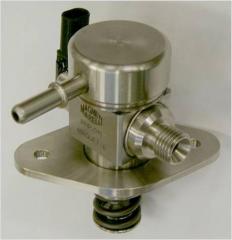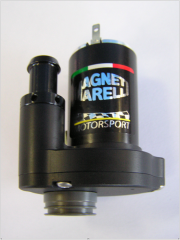I just wanted to share some ideas regarding the engine rules, and specifically regarding energy flows. The energy ERS flows ( http://www.f1technical.net/forum/viewto ... start=4485 ) page 300 of this forum.
In the same page, the idea of directly using MGU-H to power the MGU-K was briefly discussed.
1. Indirectly it seems one can pass energy from the Energy storage through the MGU-H to the MGU-K without any limitation (apart from draining the storage). I could not find this discussed, it may be illegal, but reading the regulations I do not see how.
2. The fact that MGU-H harnesses turbine power and uses it for power through MGU-K does change the scope of the engine system. I would argue that large intercoolers could lower total thermal efficiency in this system. Their purpose is to fit more oxygen to the combustion chamber when power is only produced by the piston. Also lowering temperature of the gas, makes for easier MBT/less knock. However, when direct injection of a custom fuel (no RON limit in 2014) is in place, these may not that important.
Keeping the intake air hot, means that the exhaust is even hotter getting higher velocity for the same mass flow through the turbine, and now the turbine can make more power (while the pistons make less - how much less?). That power would be wasted to the atmosphere through the intercooler. Material limitations might be important however (remember mahle - steel pistons). Smallish intercoolers will still keep gases within reasonable limits however. Seeing the humongous renault IC makes me wonder.
Same reasoning would show exhaust wastegates are useless in this application. But the tradeoff is not easy to estimate without more information/testing etc. Power from the turbine seems to be 90kW. But now you have a hybrid combustion engine (not just because of the ERS, but also because both turbine and pistons power the wheels) which is a large and under-researched innovation.
3. There may be conditions where one would deliberately stall the compressor to limit boost and harness the turbine shaft power. Or even better, a boost pressure relief valve. "Intake Wastegate"
4. With all the above, backpressure may not be bad as it would be in a normal turbo set up.
5. Injection timing is not limited, and one could have ongoing, or extra ignition during the exhaust cycle to power the turbine. Ignition timing and combustion speed may be something teams choose to play with. This really depends on the design of the turbine itself however, and there can be only one stage turbine
6. Lean Burn related: burning with high lambda reduces power, but makes good exhaust gases for the turbine. Similar to that RTU engine discussed earlier (not as extremely as the RTU people claim). After all you are fuel limited, so getting the max airflow is key, thus going as lean as possible.
Any ideas/opinions? To sum up, even though most of the energy will still be provided by the piston engine, the fact that the turbine is used to produce power as well will change dramatically how the engine works, sometimes in a counter-intuitive way when compared to "normal" engines. Even though the MGU-H is not mechanically linked, it is without limit electrically linked to the 160hp MGU-K. Still much less than a 600hp engine, but when efficiency becomes the limit it seems like the way to go.
So much room for activities!






